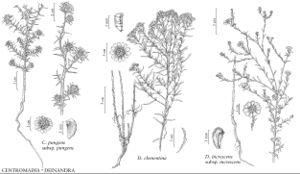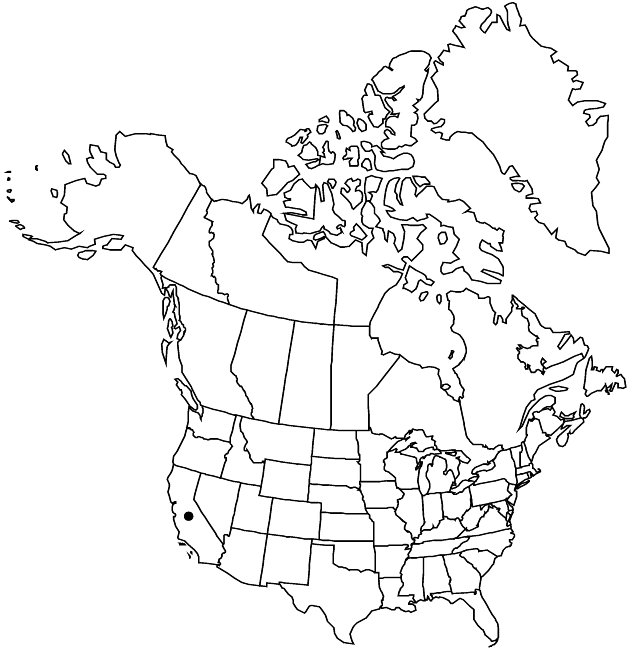Deinandra clementina
Novon 9: 468. 1999.
Subshrubs or shrubs, 15–80 cm. Stems ± solid (floccose in some leaf axils). Leaves: proximal blades toothed or entire, faces pubescent to somewhat canescent, ± hirsute, strigose, or scabrous, often stipitate-glandular. Heads usually in crowded, corymbiform or paniculiform arrays. Bracts subtending heads usually overlapping proximal 0–1/2+ of each involucre. Phyllaries ± evenly stipitate-glandular (sometimes sparsely), including margins and apices, often with non-glandular, pustule-based or non-pustule-based hairs as well. Paleae in 2 series (1 between ray and disc florets, 1 between outermost and adjacent disc florets). Ray florets (11–)13(–20); laminae deep yellow, 4.5–7 mm. Disc florets 18–30, all or mostly functionally staminate; anthers reddish to dark purple. Pappi of 7–10(–15) lance-linear, fimbriate scales 1–3 mm. 2n = 24.
Phenology: Flowering Mar–Dec.
Habitat: Grassy areas, coastal scrub, semi-barren sites, edges of salt marshes, on terraces, slopes, and ridges, often in rocky or clayey soils
Elevation: 0–200 m
Discussion
Of conservation concern.
Deinandra clementina is known only from six of the Channel Islands (Anacapa, San Clemente, San Nicolas, Santa Barbara, Santa Cruz, and Santa Catalina).
Selected References
None.

